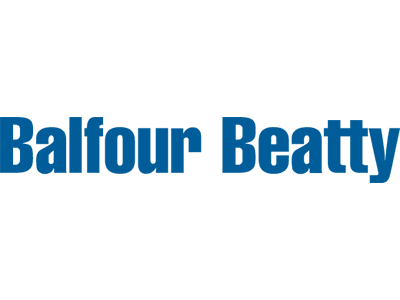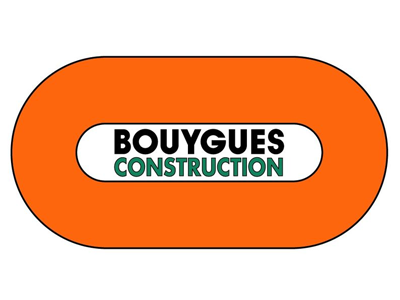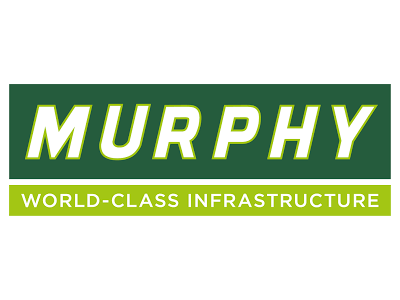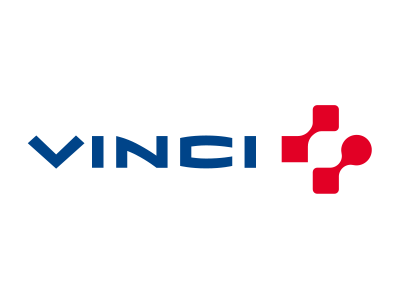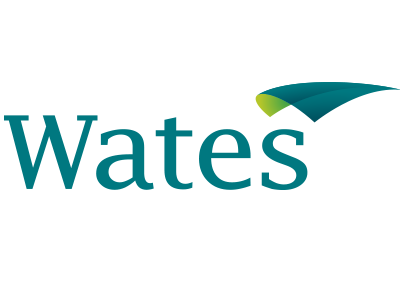Simplify Your Supply Chain & Let Us Manage The Supply, Distribution, Install & Take Down
Safe Fence Temporary Fencing
Temporary Fencing is our specialty here at Safe Fence – it’s where it all started for us. We own the supply chain and install 3.5km a week. Our wide product range, turnkey solutions, competitive pricing and best in-class best response time will give you the confidence that we will meet your requirements better than anybody else. Whether it’s Sheffield or Milton Keynes or anywhere else in the UK and Ireland, we can deliver and install for you – why would you go anywhere else?
Our durable temporary fencing options can be erected in any setting. We have cost-effective, easy to install solutions to outline boundaries right up to heavy duty, highly secure in-ground fencing systems to safely secure premises.
We deliver eco-friendly, reusable and easy to install turnkey solutions with just one point of contact along the way – Safe Fence have delivered successful projects for a range of clients from PP O’Connor to O2 Academy.
What to Consider
There are many factors to consider when installing Temporary Fencing that we will detail below.
Security
An important factor when making a decision on which fencing system is right for you. A simple mesh panel and clip is the most cost effective option and easiest to install. However, for projects or sites that require higher security, other solutions such aa portable hoarding panels would be a better solution. Security extras such as anti-tamper clips, panel infills and ground skirts help act as additional security measures, although are more expensive and take longer to install.
Ballast
For Temporary Fencing, you must consider how much support the system needs. Ballast greatly increases wind resistance and is often required in order to obtain a Temporary Works Design. It is one of the most popular ways of stabilising solid steel hoarding panels. In-ground hoarding systems do not require ballast systems, with posts being dug into the ground to support the steel panels.
Logistics
Many of our Temporary Fencing solutions are reusable and require being transported on-site, however, it can be notoriously difficult to offload and move. Stillages must be considered for holding hoarding panels and fork extensions may be required for forklifts to unload difficultly packed vehicles.
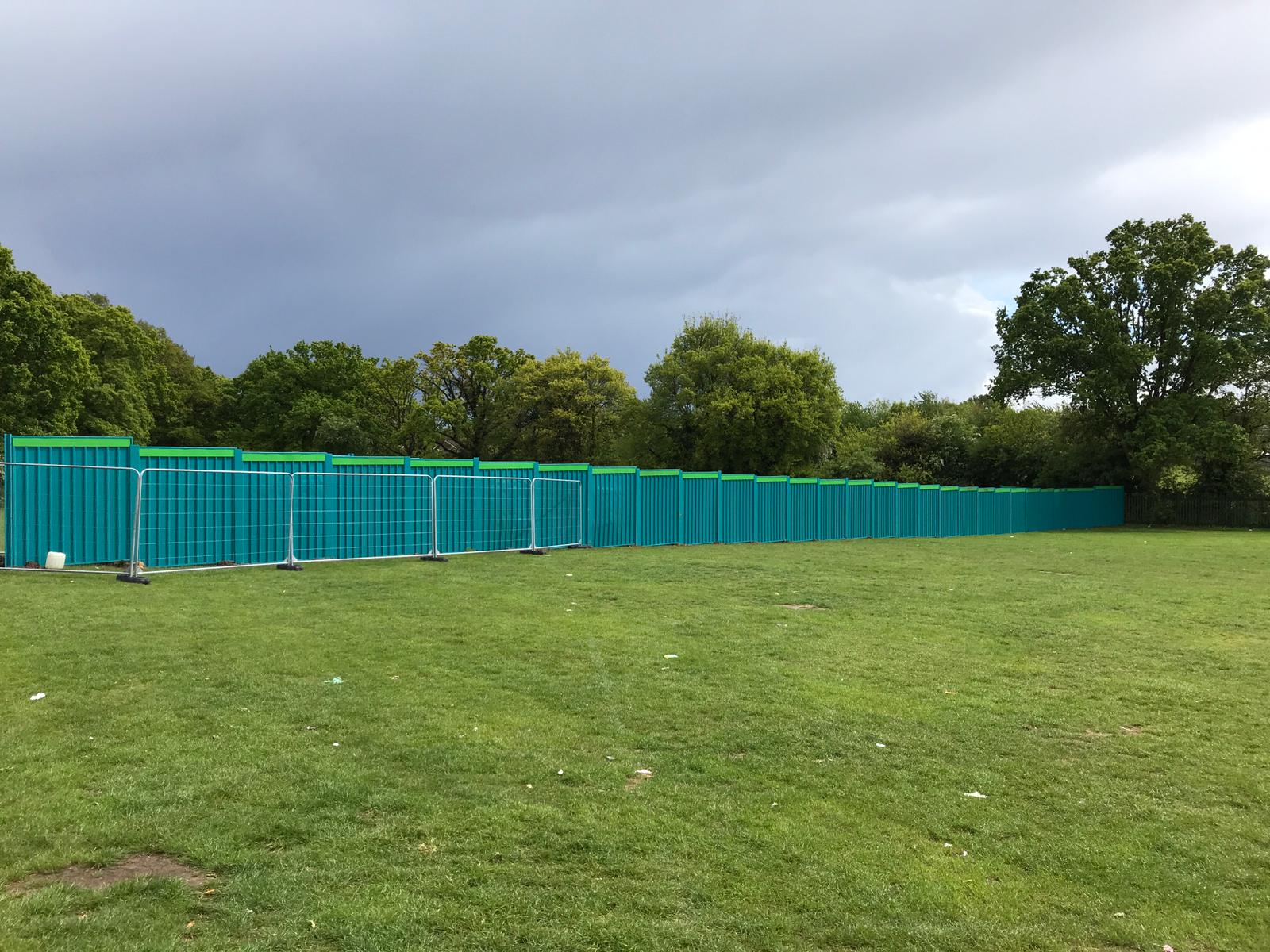
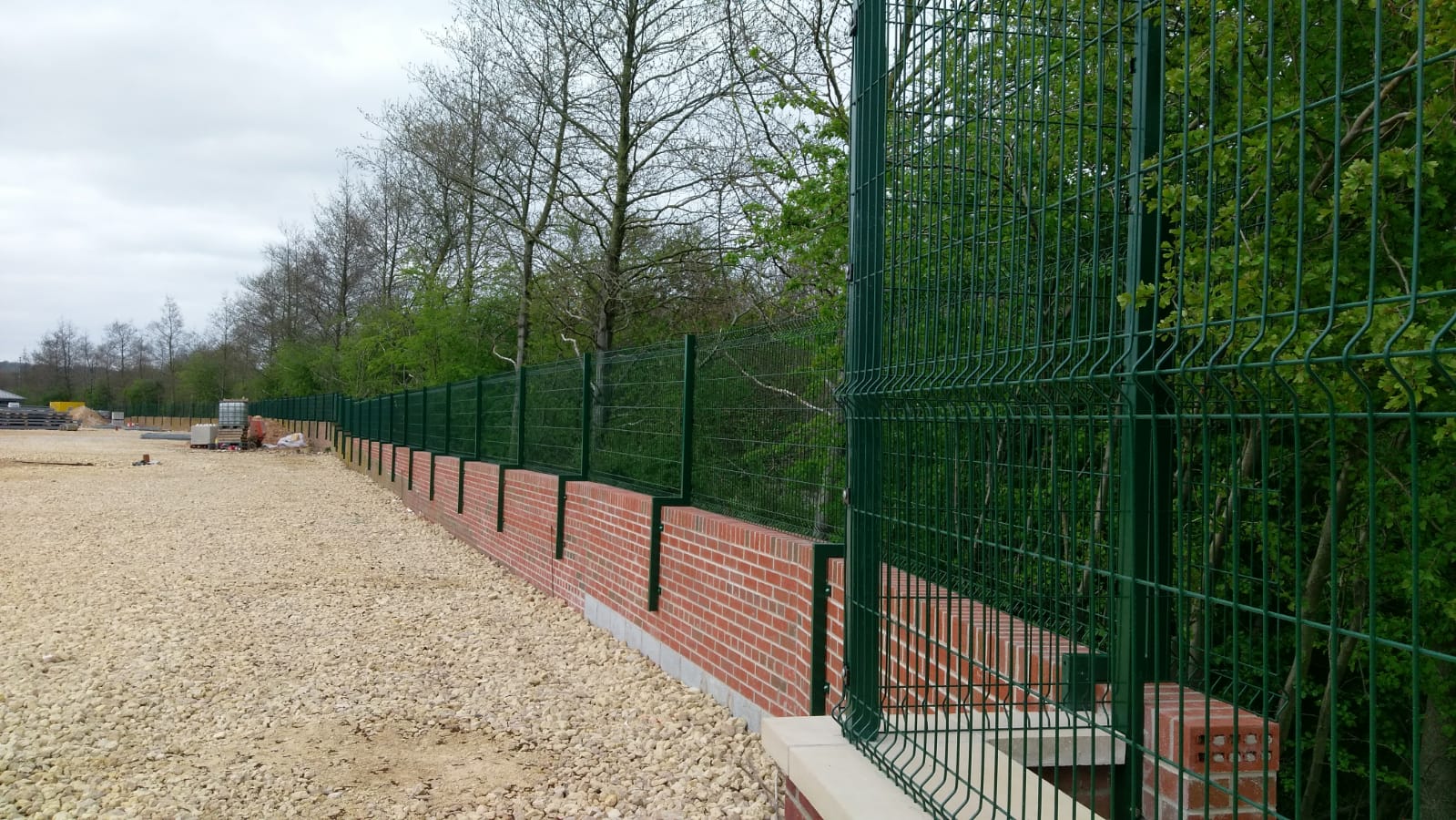
Heras Fencing
Safe Fence has complete control over the supply chain and we’ve invested heavily due to the huge demand for this product. This control enables us to supply huge quantities of stock and no other installer in the UK has the same vertical integration on this product.
Mesh Temporary Fencing is the most cost-effective form of perimeter fencing on the market. It is widely used throughout the UK & Europe – being the most effective and easiest to install. These types of panels are often referred to as Heras Fencing, due to Heras formally being the largest hire company for this product.
The fencing panels are fitted with anti-climb mesh making it a more secure fencing option and less prone to damage. These mesh security site fencing panels are perfect for securing construction sites – often used for fencing off-site perimeters, securing equipment and directing the public away from unsafe construction site areas. They are also a popular form of event fencing and for use during maintenance work.
These fencing panels are not so popular around the demolition of infrastructure – deemed unsuitable due to being very lightweight, having lower security and debris going through the mesh panels.


There are a few different variations of the classic Heras mesh fencing panels as well as a range of accompanying products to set up. In addition to the classic mesh panel, there are powder coated mesh panels, pedestrian gates and vehicle gates available. Powder coated mesh panels are available to provide for any aesthetic needs, to allow you to create a corporate or professional image on a construction or events site. Pedestrian and vehicle gates can be set up to safely manage access to your site effectively.
We also have a number of fencing support options. Traditionally, concrete blocks were used as ground support but rubber blocks are now more popular – made using eco-friendly recycled PVC. Hi-Vis Temporary Fence Feet are also available to highlight the blocks as a potential trip hazard. Slot Block Barriers are a water filled barrier designed to hold 3.5m fencing panels and withstand winds up to a maximum speed of 57mph – this prevents standard fence panels from blowing over. They are available in standard red and white colours to provide clear demarcation of site entrances and roadways. Despite being less popular these days, 18.8kg concrete ballast blocks are also available – they add weight to ballast trays and base plates in order to increase the durability and wind resistance levels of temporary fencing. However, they are more commonly used with solid corrugated steel portable hoarding panels.
There are other non-block options to help with fence support. Safe Base Anti-Trip Fence Feet provides a fence base without the presence of a trip hazard on each side with location holes to secure the fence. Fencing Stabilisers connect directly into the ground to support with temporary fencing. They are fitted with a swivel base plate with location holes which allow you to insert ground pins to hold the base plate firmly to the ground. These stabilisers are also available to fit with block trays to add ballast on top to increase wind loading of your temporary fencing.
Fence clips and anti-lift brackets are complementary products to connect panels and components together. Different fencing covers are available to meet your needs. Fence netting is most commonly used to ensure no debris penetrates the fence line. Acoustic barriers are a heavy duty option to absorb noise from anything from fans, portable compressors and large site generators. Fencing covers fit our fencing panels to display branding for a more aesthetically pleasing perimeter.
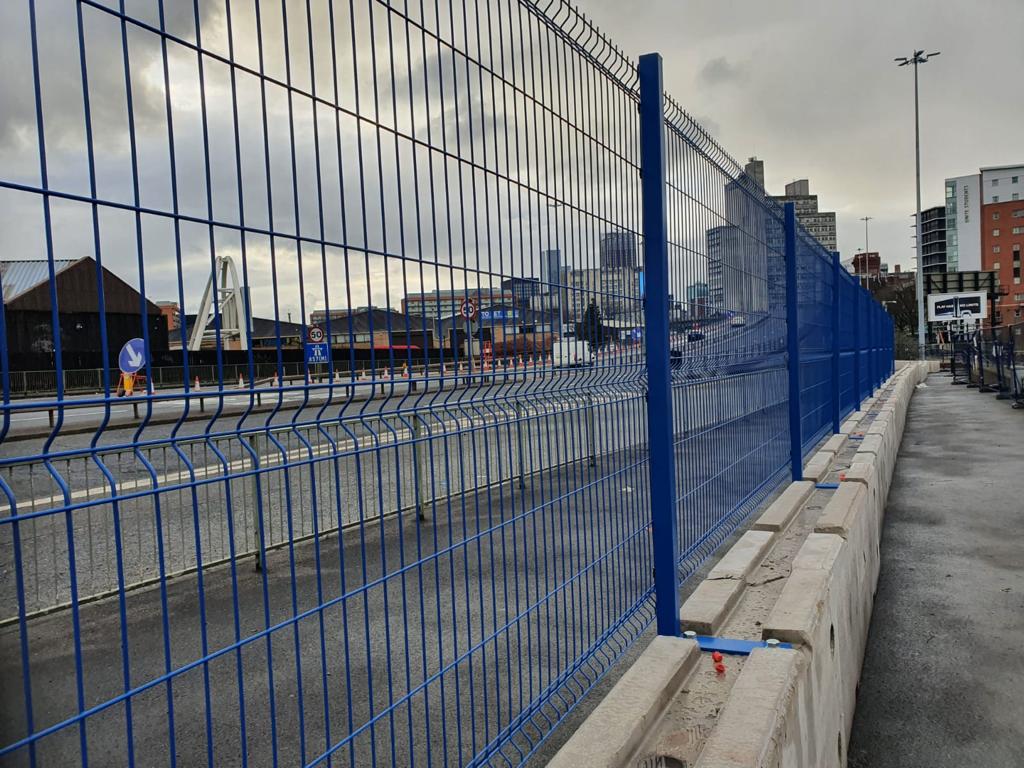
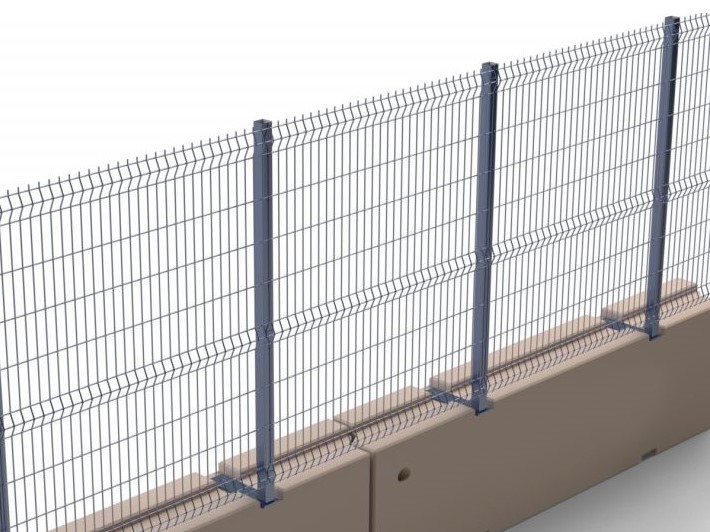
There are three stillage options for your logistics needs. Stillages are designed to maximise storage space and for transporting materials in a safely manner. We have stillages for fencing panels and fence feet. There are two fence feet – a basic option and another to contain the blocks so they will not fall out easily.
Heras mesh panel fencing is known to be lightweight, very easy to install and requires no digging into the ground. Each panel is 3.5m wide and 2.0m high and comes as standard with rounded top corners (more durable than square top panels) and reinforced corner brackets. These mesh panels are easily erected using 18kg rubber blocks either side and connected together using steel fence clips or couplers. Round top fencing panels eliminates potential “weak spots” at the top corners of each panel by using two, rather than four, pieces of tube to make up the frame.
If greater wind loading or stability is required, products are available to help with this. Stabilisers with block trays are typically used on hard ground – a steel arm that joins the top clip connects onto the panel and connects 2m back from the panel. Weight can be added to the tray using ballasts. Stabilisers with base plates are used on soft ground – a plate is used to put ground pins into the grass.
Logistics are important for installation and a proper setup is required – once the setup is right, it is easy to install. With installation you need on-site equipment in place for doing runs with the fences to move the panels up and down. Heras panels arrive on wagons and are often stacked quite high so considerations for cranes need to be made for offloading. Forklifts must also be considered to offload the panels to put them in position and move them around – they will require extended forks as the panels arrive in large packs. To easily manoeuvre the fence panels in large quantities, purchasing stillage should be considered specifically for the panels. Fencing stillages avoid the risk of damaging panels when transporting them as they have forklift guides to prevent direct contact with the panel – one of the most common forms of damage.
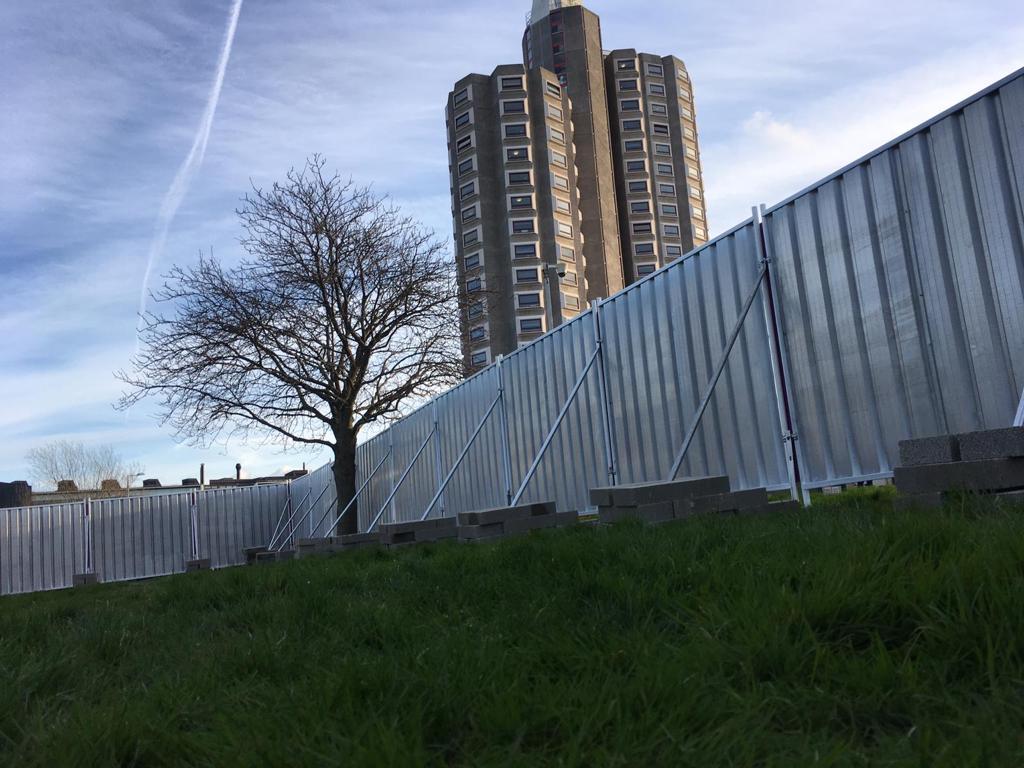
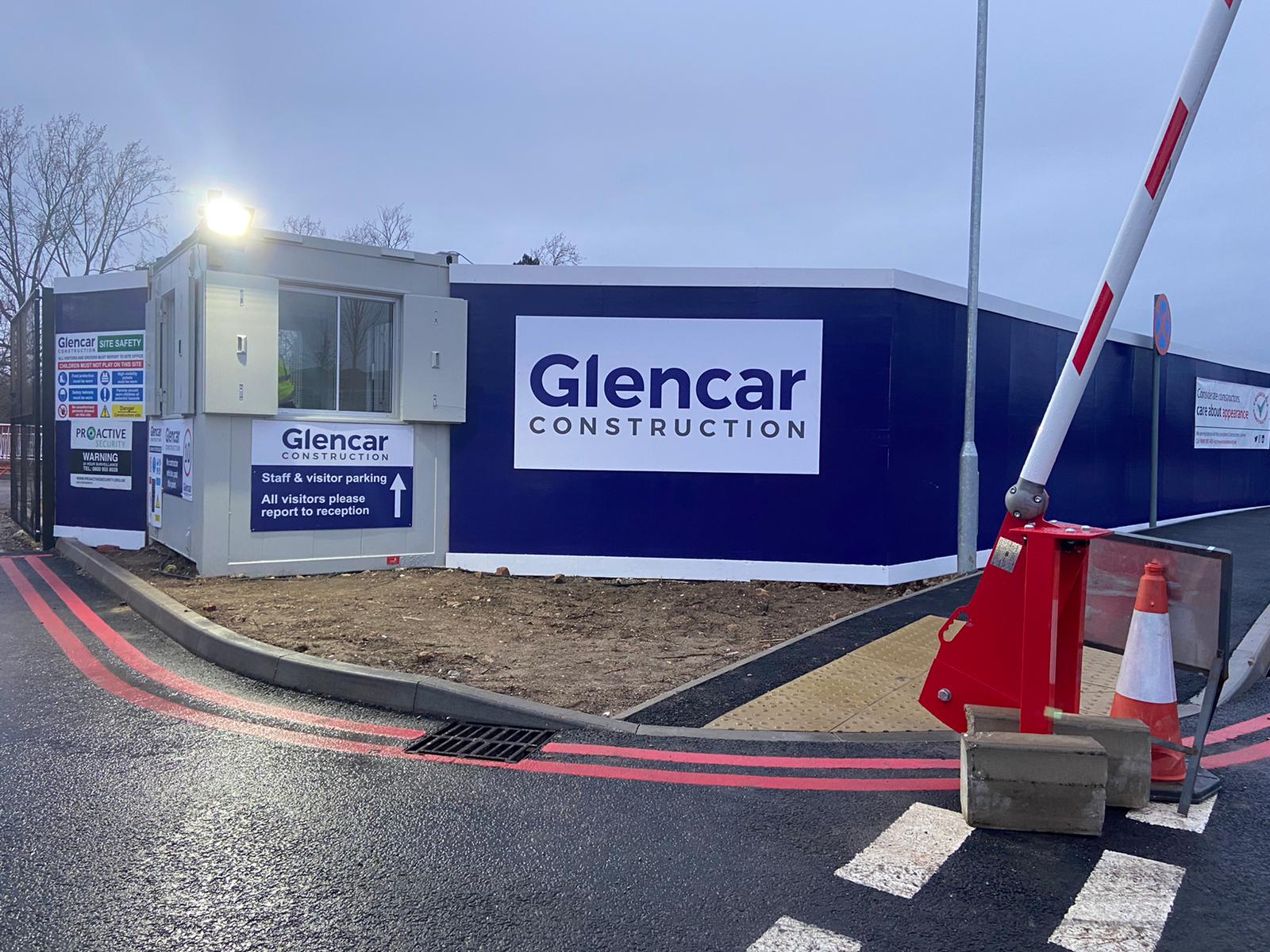
Portable Steel Hoarding
Portable Steel Hoarding is a temporary fencing system commonly found at construction and demolition sites as well as large events such as music festivals. Steel hoarding panels are connected together using fence clips and slotted directly into rubber block fence feet to support the panel upright.
It is a popular fencing option – being cheap, easily installed and easy to transport. These qualities make it a more flexible option than in-ground fencing. It is generally used over Heras fencing when a more secure, heavy duty system is required – to prevent the fencing being broken through. With corrugated, galvanised solid steel panels it prevents potential debris from escaping the perimeter site through the panel and has added privacy as it can’t be seen through.
The steel hoarding can be painted or powder coated in various colours to match your corporate colours – the powder coating will give the fencing a longer life span, helping to prevent corrosion.
Portable steel hoarding panels are connected to one another using fence clips. The panels are made up of 38.1mm tubes each side which are slotted directly into rubber block fence feet. Ground skirts run along the bottom of the panels and this composition ensures increased security. The most common heights available are 2.0m and 2.4m – and the width is generally 2m wide.
This type of steel hoarding is preferred to in-ground hoarding as it is easy to install and manoeuvre yet it is a heavy duty system – made of solid steel with a massive range of stabiliser systems.
To set this system up, a Temporary Works Design needs to be approved. Considerations for how many blocks required for each ballast to go against wind loading need to be accounted for.
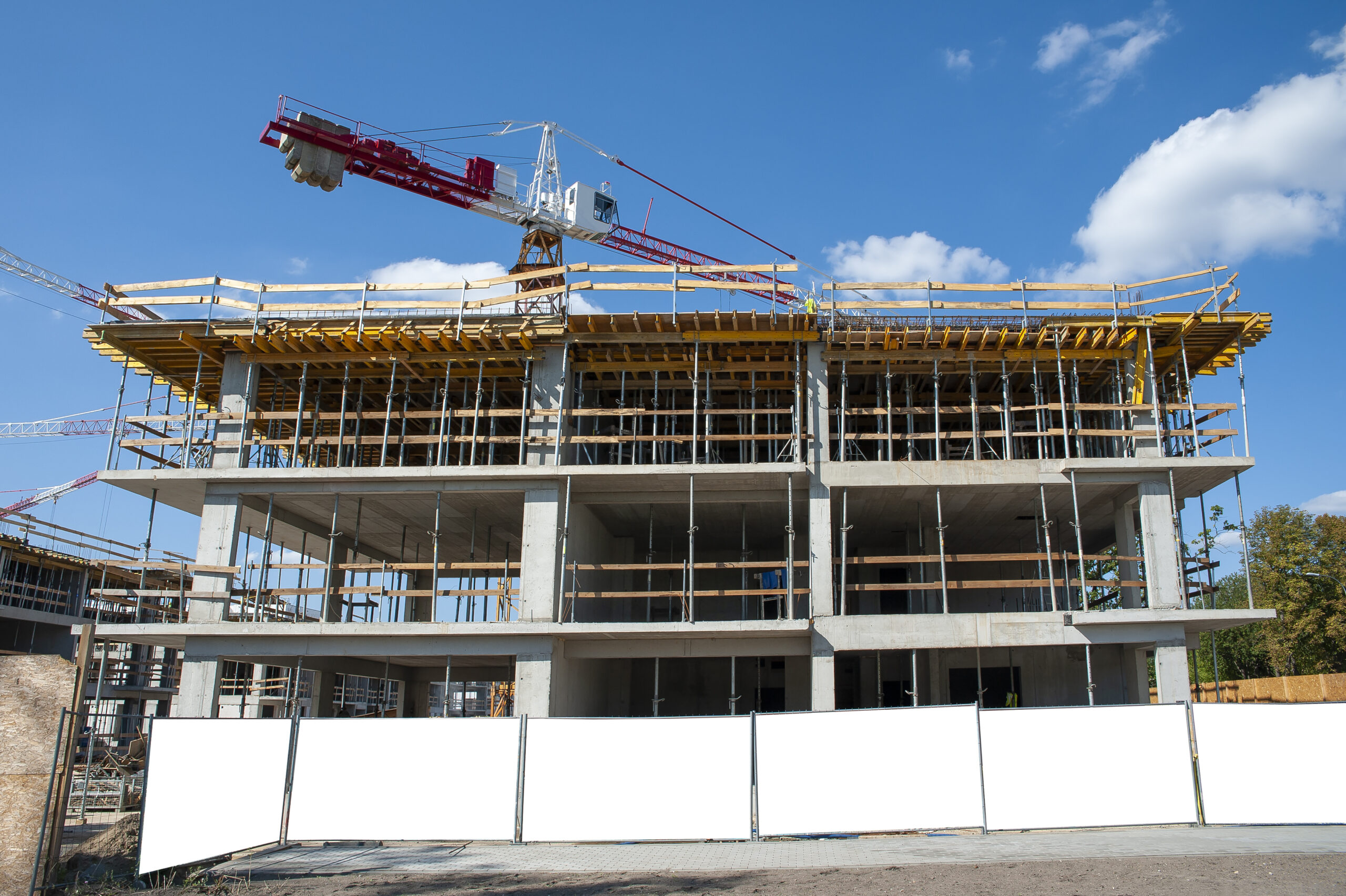
On/In-Ground Steel Hoarding
Ground Hoarding Systems are one of the core product offerings in our range – a highly recommended option at Safe Fence. We have in-ground and on-ground options available depending on your needs – in-ground hoarding requiring posts to be dug into the ground to install, with on-ground using blocks and ballast trays. Our compatible fencing systems enable on-ground and in-ground options to coexist and Temporary Works Designs can be supplied for any project.
At Safe Fence, we offer a full turnkey solution of design, supply, installation, end-of-project de-installation, transportation and re-erection at a different site. You can read about the In-Ground Hoarding system we completed for Pentadel HERE – we installed a 315m fencing ring to ensure the safety and security of the site.
It is similar to Portable Steel Hoarding but delivers a more heavy duty perimeter system for sites that require high security. The robust and durable nature of this system makes it completely reusable – it can be taken down and erected elsewhere when a project is finished and is generally suited to longer term 12+ month contracts. Portable Steel Hoarding is more easily manoeuvrable site-to-site, however we normally recommend ground steel hoarding with it being the more eco-friendly option and a better investment across several projects.
It is regularly found on construction sites and demolition sites next to public pathways and site compound installations are also common to set up an area for vehicle storage, paperworks and welfare units.
In-ground hoarding systems are set up using SteelWall Hoarding panels, which are connected to in-ground SteelWall posts using Top Hat Brackets and M10 Bolts. The panels are available in 2.0m and 2.4m heights, being 2.1m wide and fit directly on to posts and clipped onto the back. Pedestrian door panels and heavy duty steel vehicle gates are also available for civilian access.
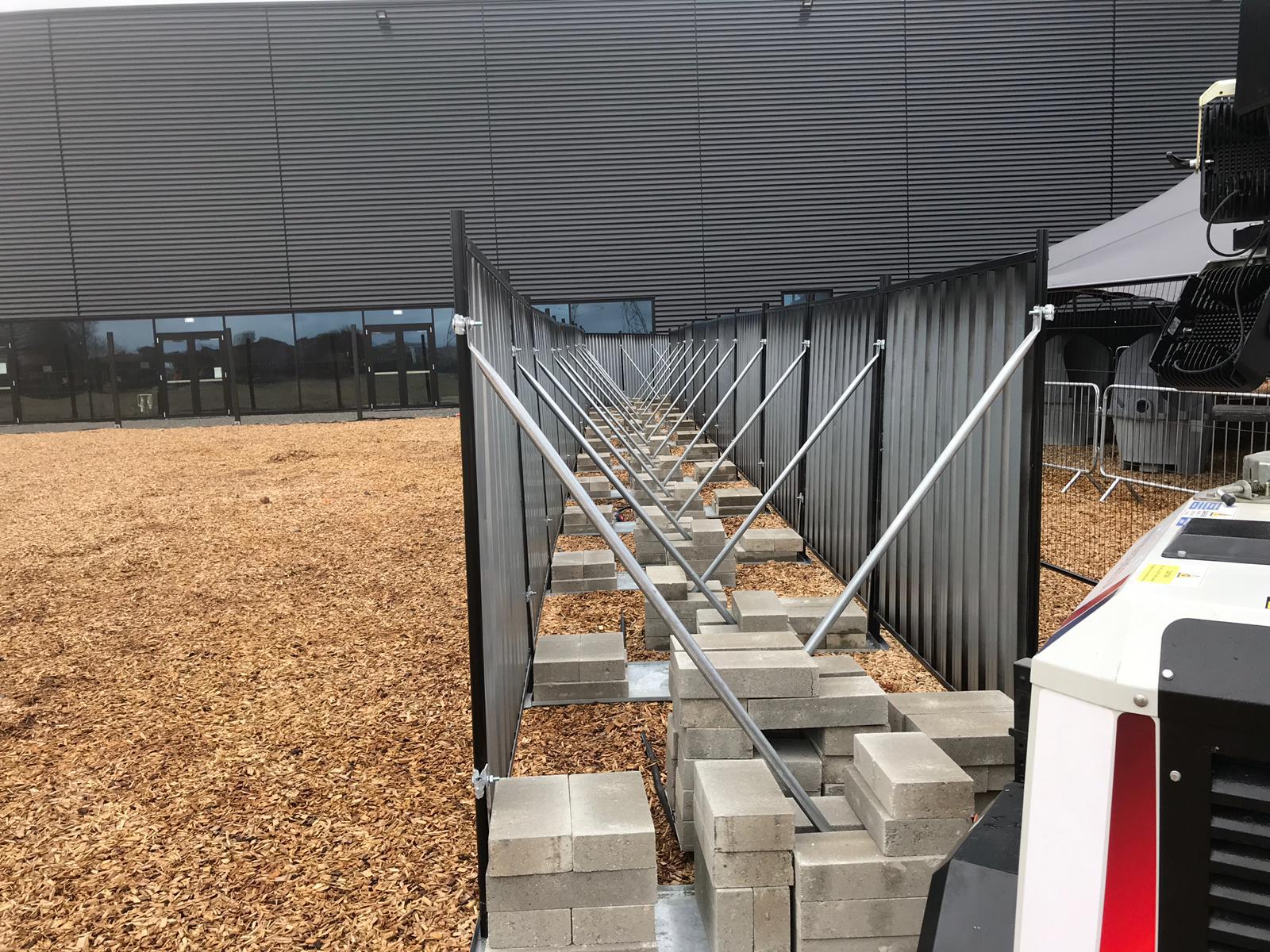
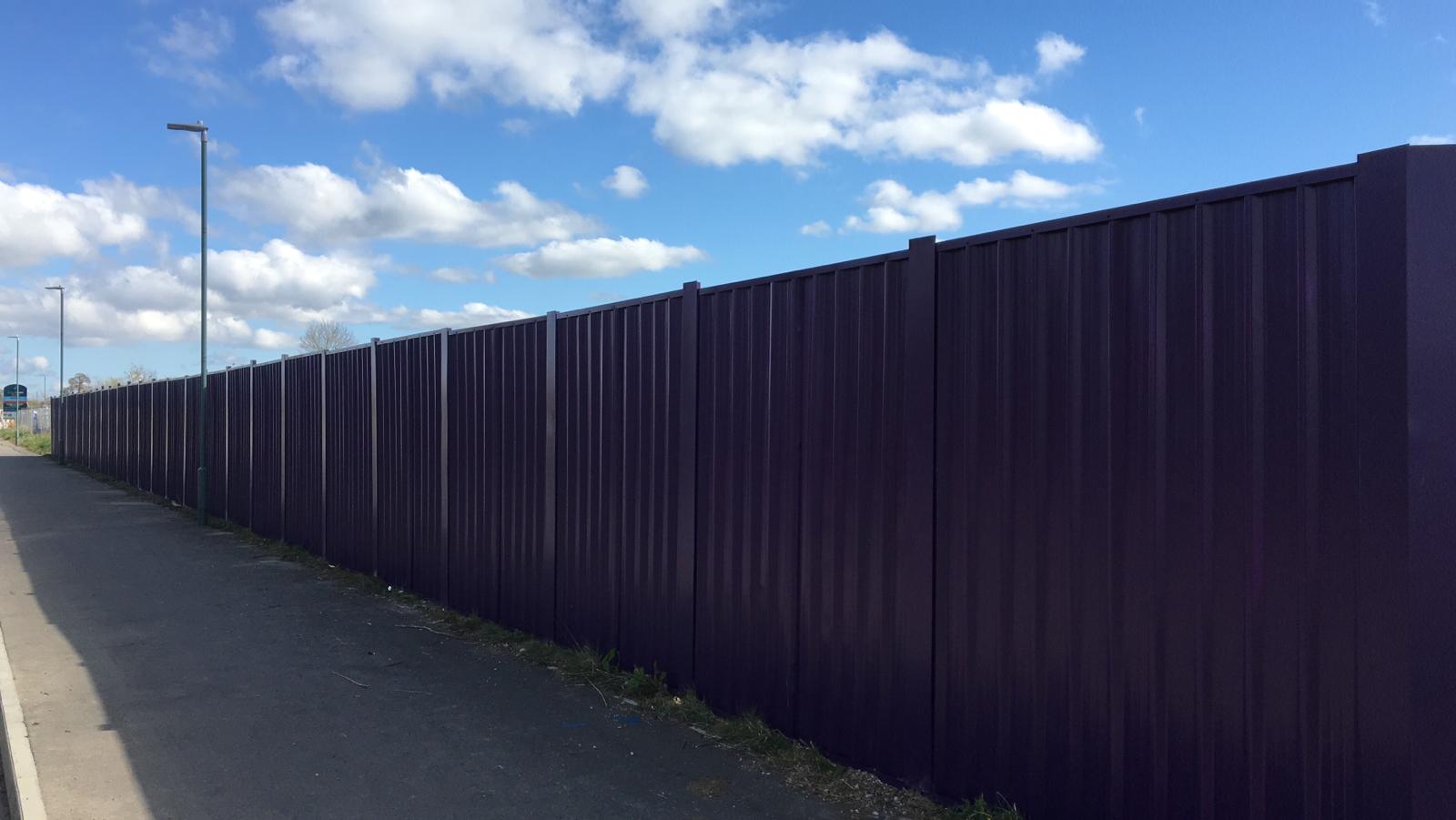
On-ground hoarding systems are set up using ballast trays and blocks giving you a perimeter fencing system that is completely reusable, movable and doesn’t require posts being dug into the ground. This means installation is a lot quicker. It includes hoarding panels, fence clips, ballast systems and concrete ballast blocks.
Portable Steel Hoarding systems require extra materials such as ground skirts to set up, however this is not needed with ground hoarding panels as it sits perfectly flat on the ground.
These systems are generally preferred to Timber Hoarding, as the panels can be taken down and reused with Timber Hoarding’s lower lifespan – ground hoarding systems are considered much better investments.
Timber Hoarding
Safe Fence can install Timber fencing nationwide with our national supply coming from Timber Mills. With in-house design and a wide range of experience, we don’t just offer simple Timber hoarding but can offer it with on-ground ballast systems or with brackets to allow it to connect onto concrete TVCBs.
Timber Hoarding is a temporary fencing option typically used to secure demolition and construction sites. The panels are made from plywood and tend to be one-use.
It has traditionally been preferred to steel hoarding with it being the more inexpensive option, although steel is now becoming more popular with a less significant price difference. It tends to be an attractive option for 6-12 month projects and for those looking for a budget solution. 90% of timber hoarding systems are in-ground – without the need for a framework and ballast, these fence lines are much better when there is limited space. On-ground systems can be created where digging is not permitted. Graphics are easily applied with the hoarding painted on-site, however the paint will fade over time and soak into the plywood.
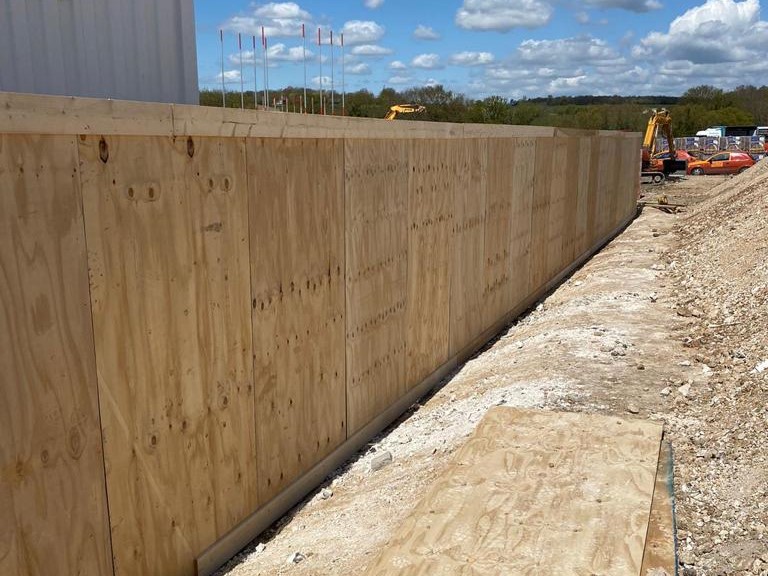
Timber Hoarding is made up of 1200x2400x18mm thick timber plywood sheets – with posts being dug into the ground every 2.0m or 2.4m. Posts are sunk into 400mm square holes and filled with lean mix concrete. Horizontal rails are fitted between posts – one at the top, middle and bottom. The plywood sheets are hammered onto the rails to form the fence panel. Centres change depending on the specification of the parts – most councils and firms have their own specifications.
Top and bottom capping is an option to provide a more stable finish – a box runs across the top and bottom of the fence to keep the panel looking straight and prevent it from twisting. Infill strips can also be fitted between where the panels butt up to each other to help give a better finish. Most good quality developments will have capping installed and paint the plywood for commercial purposes.
There are different types of plywood available at different levels of quality – from lower quality OSB Chipboard Hoarding to a more premium C grade plywood.

